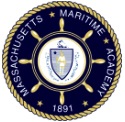OICNW-3-1G
Detect speed and course changes of other ships
Function: Navigation at the operational level
| Competence | Knowledge, Understanding & Proficiency | Task |
|---|---|---|
|
Use of radar and ARPA to maintain safety of navigation |
A3.2 Ability to operate and to interpret and analyse information obtained from radar, including the following: Performance, including:
Use, including:
|
Detect speed and course changes of other ships |
Assessed in: MT-3122 Radar Observer Certification
Condition
On an operational radar or radar simulator that meets the standards of 33 CFR 164.38 and other applicable national and international performance standards, set on the 12 mile scale, in the stabilized relative motion north up mode, and with meeting of crossing targets.
Behavior
Detect speed and course changes of other ships, which result in a change in the direction or speed of relative motion.
Standard
Other ships’ speed changes of at least 5 knots and/or course changes of at least 10° were detected within one minute from the time the candidate began his or her systematic observation of the display.
